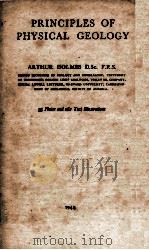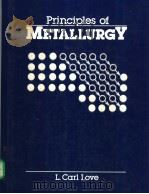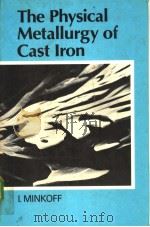《Principles of Physical Metallurgy》
| 作者 | Morton C.Smith 编者 |
|---|---|
| 出版 | Allied Pacific Private Limited. |
| 参考页数 | 417 |
| 出版时间 | 1962(求助前请核对) 目录预览 |
| ISBN号 | 无 — 求助条款 |
| PDF编号 | 818142908(仅供预览,未存储实际文件) |
| 求助格式 | 扫描PDF(若分多册发行,每次仅能受理1册) |
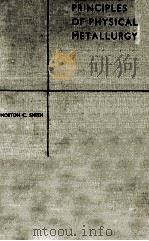
Chapter 1.The Atom1
1.1General Structure of the Atom1
1.2 Electrons3
1.3 Motion of the Electron5
1.4 The Exclusion Principle5
1.5 Energy Levels Within the Atom6
1.6 Energy-Level Diagrams7
1.7 Degeneracy of Energy Levels10
1.8 Shells of Electrons11
1.9 Chemical Valence12
1.10 The Periodic Table15
1.11 Multiple Valences24
1.12 Free Energy25
1.13 Spontaneous Changes26
1.14 Chemical Activity28
1.15 Activity Series for the Nonmetals30
Chapter 2.Crystallography32
2.1Metal Crystals32
2.2 Space Lattices in General33
2.3 The Fourteen Possible Space Lattices34
2.4 The Possibility of Additional Space Lattices37
2.5 Crystallographic Notation38
2.6 Reference Axes39
2.7 The Seven Crystal Systems41
2.8 Intercepts43
2.9 Miller Indices43
2.10 Sets and Families of Planes45
2.11 Indices of Direction47
2.12 Miller-Bravais Indices51
2.13 Hexagonal Indices of Direction53
Chapter 3.Crystal Structures56
3.1Solids,Liquids,and Gases56
3.2 Cystalline vs.Amorphous Solids58
3.3 Crystal Lattices60
3.4 Important Planes and Directions62
3.5 Bonding Forces in Crystals64
3.6 Molecular Crystals65
3.7 Ionic Crystals67
3.8 Intermetallic Compounds of the Ionic Type71
3.9 Valence Crystals73
3.10 The 8 Minus N Rule76
3.11 Valence-Molecular Crystals77
3.12 Metallic Crystals79
3.13 The Metallic Bond80
3.14 Metallics vs.Ionic and Covalent Bonding82
3.15 The Structures of Metallic Crystals83
3.16 The Close-Packed Hexagonal(C.P.Hex.)Structure84
3.17 Characteristics of the Close-Packed Hexagonal Structure87
3.18 Examples of Close-Packed Hexagonal Crystals89
3.19 The Face-Centered Cubic(F.C.C.)Structure90
3.20 The Body-Centered Cubic(B.C.C.)Structure93
3.21 Other Crystal Structures94
3.22 Rationalization of Observed Crystal Structures96
3.23 Electron Concentration98
Chapter 4.Polymorphism100
4.1Polymorphic Transformations100
4.2 Examples of Polymorphism101
4.3 The Theoretical Basis for Polymorphism102
4.4 Bonding Forces and Polymorphism105
4.5 Hysteresis and Activation Energies107
4.6 Transition Structures110
4.7 The Martensite Transformation112
Chapter 5.Crystal Imperfections115
5.1Elastic Distortion115
5.2 Free Metal Surfaces116
5.3 Surface Energy117
5.4 Freezing of a Pure Metal119
5.5 Grain Boundaries121
5.6 Residual Affinity;Heterogeneous Alloys124
5.7 Grain Growth125
5.8 Spheroidization127
5.9 Amorphous Metal;the Beilby Layer130
5.10 Vacant Lattice Points;Diffusion134
5.11 Defect Lattices137
5.12 Dislocations138
5.13 Mosaic Structure141
5.14 Lineage Structure143
5.15 Alloy Types144
5.16 Crystal Distortion by Foreign Atoms147
5.17 Determination of Solubility Limits149
5.18 Interstitial Solid Solutions151
5.19 Interstitial Compounds153
5.20 Substitutional Solid Solutions154
5.21 Relative Valence Effect155
5.22 Electron Concentration vs.Extent of Solubility156
5.23 Ordered Substitutional Solid Solutions158
5.24 The Physical Basis of Ordering159
5.25 Long-Range and Short-Range Order161
5.26 Imperfectly Ordered Solid Solutions163
5.27 Ordered Solid Solutions vs.Compounds164
5.28 Order in Interstitial Solid Solutions165
Chapter 6.Electrical and Magnetic Properties of Metals167
6.1Electrical Conduction167
6.2 The Electron Cloud in Conductors167
6.3 The Necessity for Excitation168
6.4 Electrical Conductors169
6.5 Electrical Insulators171
6.6 Semi-conductors172
6.7 Photoconductors172
6.8 The Band Theory in General172
6.9 Electrical Resistance173
6.10 Magnetism176
6.11 Diamagnetism176
6.12 Paramagnetism177
6.13 Ferromagnetism179
6.14 Magnetic Applications181
6.15 Magnetic Materials182
Chapter 7.Deformation of Metals184
7.1Toughness184
7.2 Elastic vs.Plastic Deformation186
7.3 Elastic Deformation187
7.4 Importance of the Elastic Modulus188
7.5 The Stress-Strain Curve191
7.6 Instantaneous Stress vs.Strain193
7.7 Simultaneous Elastic and Permanent Deformation196
7.8 Springback198
7.9 Type of Loading for Permanent Deformation198
7.10 Resolution of Forces201
7.11 Effect of Type of Bond on the Possibility of Slip202
7.12 Slip Planes and Slip Directions204
7.13 Slip in Close-Packed Hexagonal Crystals205
7.14 Behavior of a Zinc Single Crystal in Tension207
7.15 Slip in Face-Centered Cubic Crystals209
7.16 Slip in Body-Centered Cubic Crystals210
7.17 Slip in Other Crystal Structures211
7.18 Progress of Slip in a Single Crystal211
7.19 Force Required to Produce Slip215
7.20 Slip by Movement of a Dislocation217
7.21 Shearing Force to Move a Dislocation219
7.22 Origin of Initial Slip221
7.23 Cessation of Slip on an Active Slip Plane223
7.24 Slip-Interference Theories of Strain Hardening224
7.25 Dislocation Theory of Strain Hardening226
7.26 Stress Field of a Dislocation227
7.27 Interactions Among Dislocations228
7.28 Development of a Dislocation Lattice229
7.29 Incidental Effects of the Dislocation Lattice230
7.30 Mechanical Twinning232
7.31 The Mechanism of Twinning234
7.32 The Importance of Twinning236
7.33 Microscopic Appearance of Twins237
7.34 Distinction Between Twin Bands and Slip Bands240
7.35 Deformation of Polycrystalline Aggregates242
7.36 The Influence of Grain Boundaries243
7.37 Effect of Alloying on Permanent Deformation246
Chapter 8.The Effects of Permanent Deformation249
8.1Strain Hardening(Work Hardening)249
8.2 Industrial Importance of Strain Hardening255
8.3 Change in Shape of Individual Crystals258
8.4 Banding and Flow Lines(Mechanical Fibering)260
8.5 Mechanical Effects of Banding263
8.6 Orange-Peel Structure265
8.7 Deformation Bands(Strain Markings)266
8.8 Homogeneous Crystal Rotation269
8.9 Preferred Orientation(Crystallographic Fibering)273
8.10 Industrial Importance of Preferred Orientation275
8.11 Strain Hardening from Preferred Orientation280
8.12 Energy Changes from Mechanical Deformation281
8.13 Macrostresses(Heyn Stresses)282
8.14 Microstresses283
8.15 Bauschinger Effect284
8.16 Elastic Aftereffect(Elastic Hysteresis)286
8.17 Damping287
8.18 Other Structure-Sensitive Properties289
8.19 Structure-Insensitive Properties291
Chapter 9.The Effects of Elevated Temperature293
9.1Diffusion293
9.2 Grain Growth295
9.3 Factors Favoring Grain Growth296
9.4 Temperature.Time and Grain Size299
9.5 Effect of Intergranular Films on Grain Growth301
9.6 Recovery(Resoftening)303
9.7 Low-Temperature Stress Relief;the Light Anneal304
9.8 Recrystallization305
9.9 Nucleation306
9.10 Crystal Growth310
9.11 The Full Anneal;Recrystallized Grain Size311
9.12 Development of Coarse Recrystallized Grain Size312
9.13 Microstructure After Recrystallization317
9.14 Annealing Textures318
9.15 Annealing Twins321
9.16 Hot vs.Cold Mechanical Working321
9.17 Advantages of Hot Working323
9.18 Disadvantages of Hot Working327
9.19 Force Required to Produce Permanent Deformation331
9.20 Effect of Duration or Rate of Loading333
9.21 Hot Pressing337
9.22 Creep338
9.23 The Creep Curve339
9.24 Effect of Magnitude of Load upon the Creep Curve340
9.25 Creep Strength,Creep Life,and Creep Limit341
9.26 Effect of Temperature upon the Creep Curve342
9.27 Mechanism of Permanent Deformation During Creep344
9.28 Selection of Metals for Creep Service348
Chapter 10.Fracture353
10.1Type of Force Required to Produce Cracking353
10.2 Shear Fractures355
10.3 Energy Relations in Cracking;Inherent Strength of Crystals358
10.4 Fracture Strengths of Polycrystalline Metals359
10.5 Location of Cracks368
10.6 Appearance of Fracture Surfaces369
10.7 Permanent Deformation During Fracture370
10.8 Polyaxial Stresses372
10.9 Notch Sensitivity377
10.10 Conclusions Concerning Fractures379
10.11 Fatigue Failure(Detail Fracture)381
10.12 Formation and Extension of Fatigue Cracks382
10.13 Appearance of Fatigue-Fracture Surfaces384
10.14 Type of Loading to Produce Fatigue Cracking385
10.15 Prevention of Fatigue Failures387
10.16 Fatigue Testing398
10.17 Fatigue Testing Machines400
10.18 Surface Finish403
10.19 Size Effect403
10.20 Corrosion-Fatigue Testing405
10.21 Usefulness of Fatigue Testing406
Index407
1962《Principles of Physical Metallurgy》由于是年代较久的资料都绝版了,几乎不可能购买到实物。如果大家为了学习确实需要,可向博主求助其电子版PDF文件(由Morton C.Smith 1962 Allied Pacific Private Limited. 出版的版本) 。对合法合规的求助,我会当即受理并将下载地址发送给你。
高度相关资料
-

- PHYSICAL PRINCIPLES OF MAGNETISM
- 1966 D.VAN NOSTRAND COMPANY LTD
-
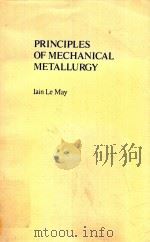
- PRINCIPLES OF MECHANICAL METALLURGY
- 1981 EDWARD ARNOLD
-
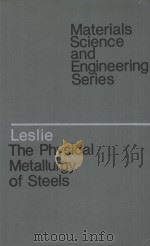
- THE PHYSICAL METALLURGY OF STEELS
- 1981 HEMISPHERE PUBLISHING CORPORATION MCGRAW-HILL BOOK COMPANY
-
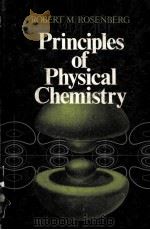
- Principles of physical chemistry
- 1977 Oxford University Press
-

- PRINCIPLES OF PHYSICAL GEOLOGY
- 1965 THE ENGLISH LANGUAGE BOOK SOCIETY AND THOMAS NELSON AND SONS
-

- PHYSICAL METALLURGY
- 1959 MCGRAW-HILL BOOK COMPANY INC.
-

- PHYSICAL METALLURGY OF STRESS CORROSION FRACTURE
- 1959 INTERSCIENCE PUBLISHERS
-

- PRINCIPLES OF PHYSICAL CHEMISTRY
- 1982 PITMAN
-

- PRINCIPLES OF PHYSICAL CHEMISTRY
- 1978 HEINEMANN EDUCATIONAL BOOKS LTD.
提示:百度云已更名为百度网盘(百度盘),天翼云盘、微盘下载地址……暂未提供。➥ PDF文字可复制化或转WORD
